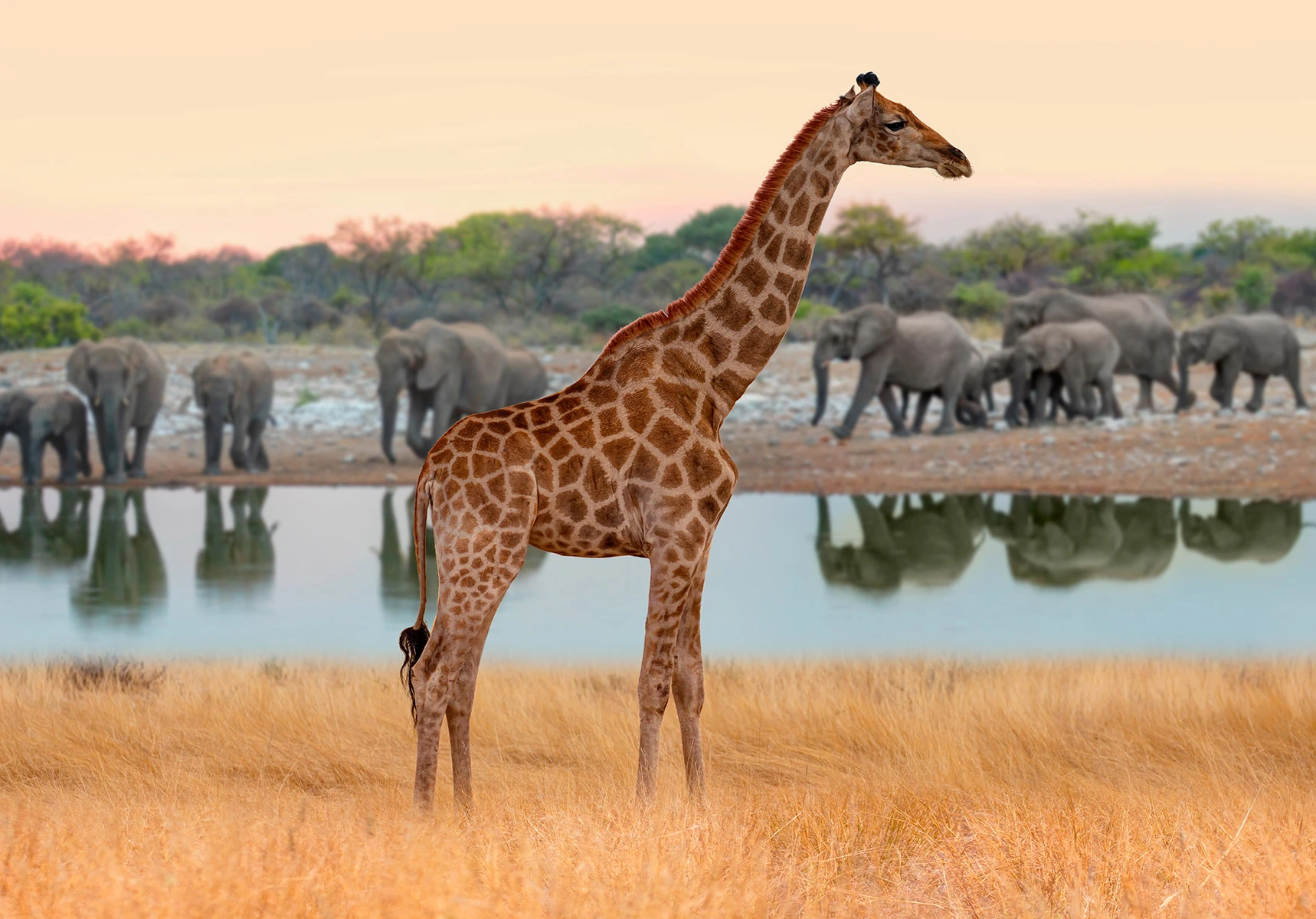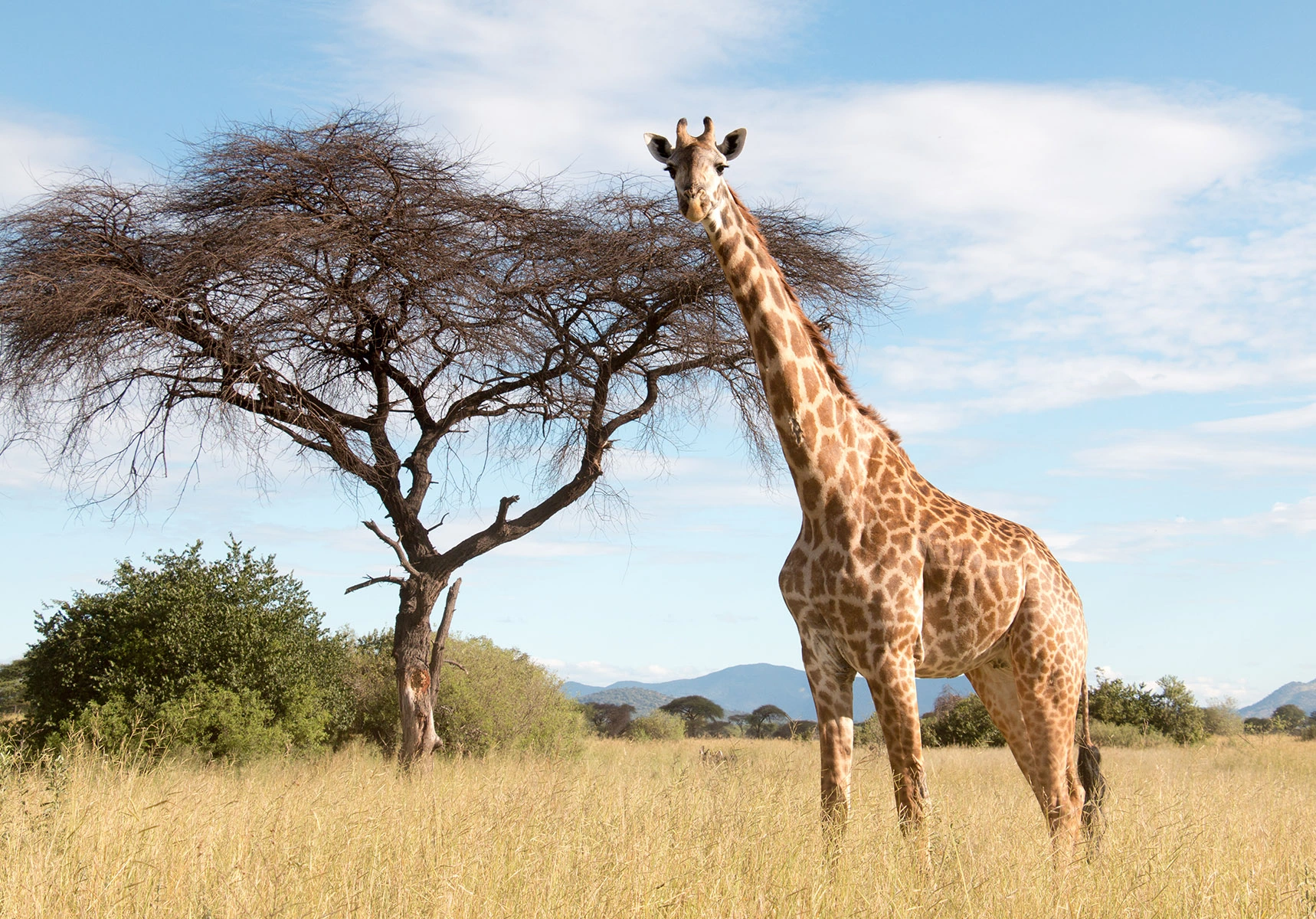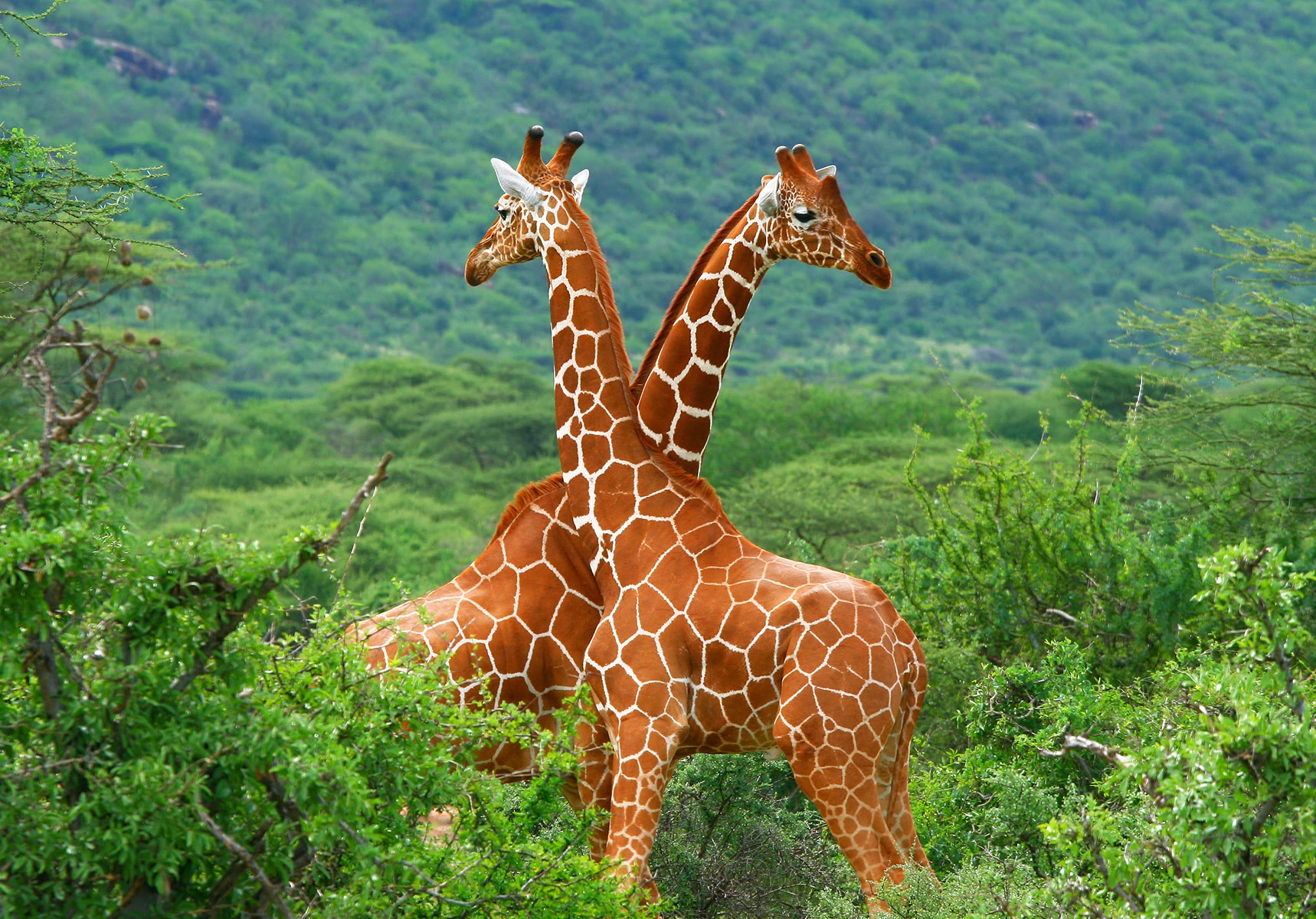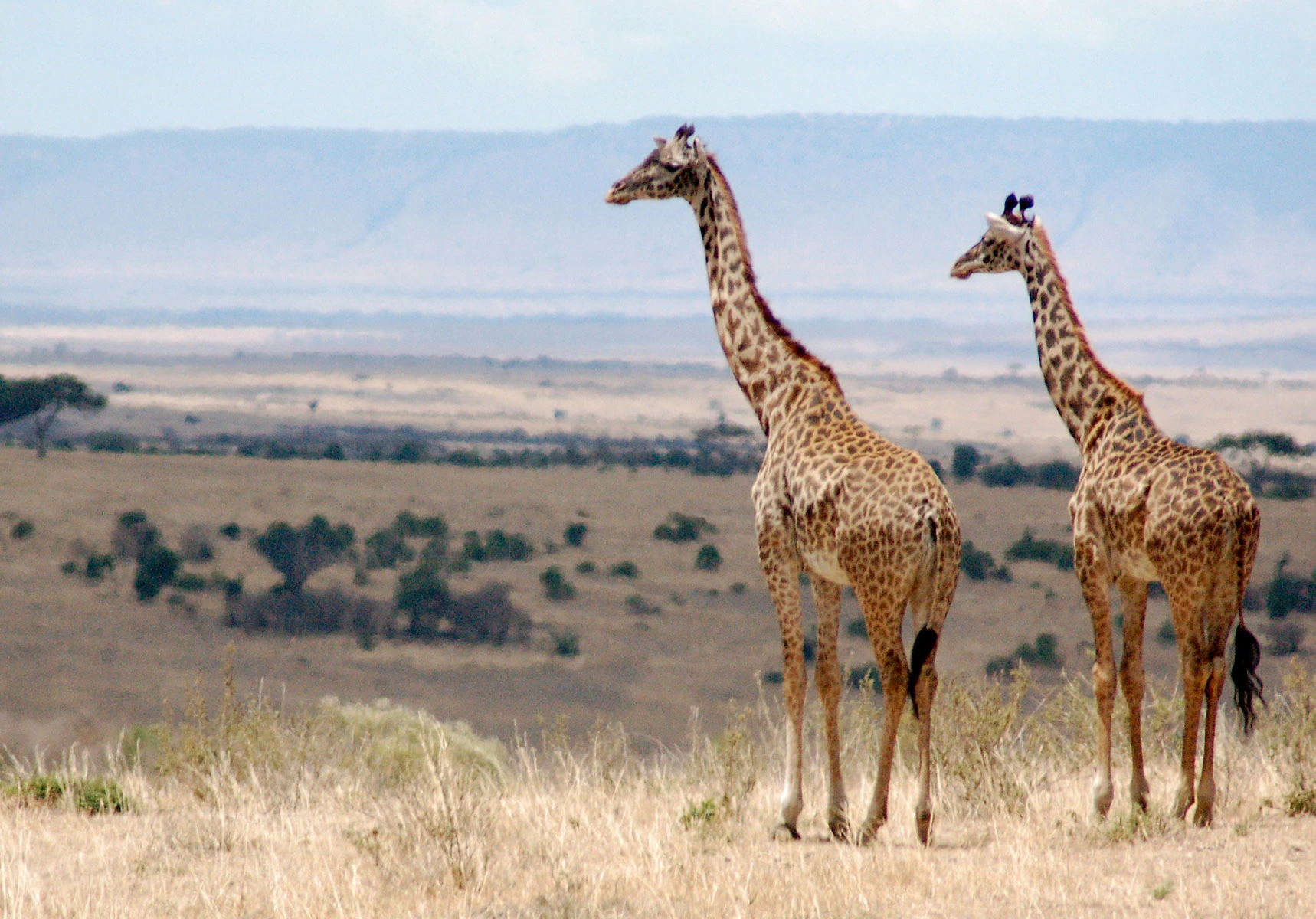Say hello to Twiga! Her name, Swahili for ‘giraffe,’ perfectly captures her grace, elegance, and towering height.
Twiga’s story began 25 million years ago, when her ancestors were smaller and resembled deer. Over time, evolution gifted her family with long necks to reach the treetops, creating the iconic silhouette we admire today. With her unique coat pattern, Twiga represents one of four giraffe species, each beautifully adapted to different regions of Africa.
As the tallest land animal, Twiga sees the world from a special perspective and dreams of wide-open savannas where her kind can thrive.
Ready to stretch your neck and explore with Twiga? Let’s reach for the stars together!
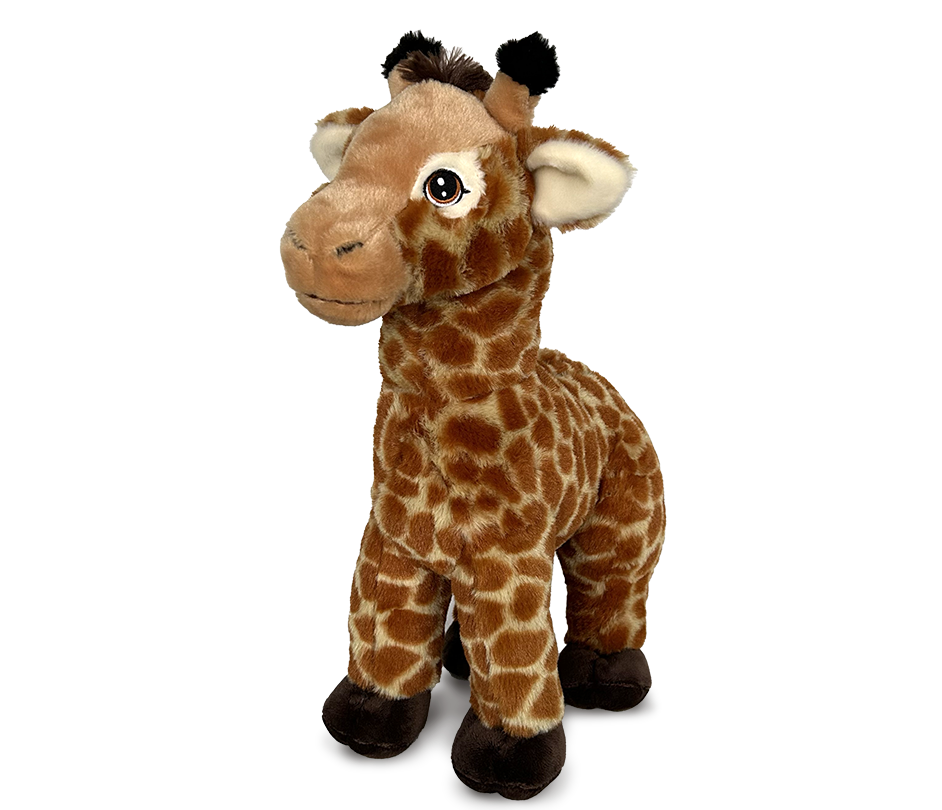
Origin
Giraffes are native to sub-Saharan Africa, predominantly inhabiting savannas, grasslands, and open woodlands in countries like Kenya, Tanzania, South Africa, and Namibia.
Risk Level
Medium to high, as giraffes face threats from habitat loss, fragmentation, poaching, and human-wildlife conflict. Populations in some regions are declining significantly.
Species
Four species with multiple subspecies: Northern giraffe (Giraffa camelopardalis). Southern giraffe (Giraffa giraffa). Reticulated giraffe (Giraffa reticulata). Masai giraffe (Giraffa tippelskirchi).
Status
Giraffes are classified as vulnerable by the IUCN Red List, with some subspecies like the Nubian giraffe critically endangered. Conservation efforts focus on habitat preservation, anti-poaching measures, and community-based programs to promote coexistence with humans.
Why is ‘Twiga’ important to the eco-system?
Well, giraffes like Twiga are nature’s sky-high gardeners! By nibbling on leaves from tall trees, they help prune the vegetation, encouraging new growth and keeping the savanna healthy.
But that’s not all! Twiga and her giraffe friends spread seeds as they move from tree to tree, giving plants a chance to grow in new places. Plus, their height allows them to reach food that other animals can’t, reducing competition and creating balance in the ecosystem.
Protecting Twiga’s savanna home is so important—not just for her, but for all the creatures that depend on the habitat she helps shape. Plus, thriving savannas play a big role in fighting climate change.
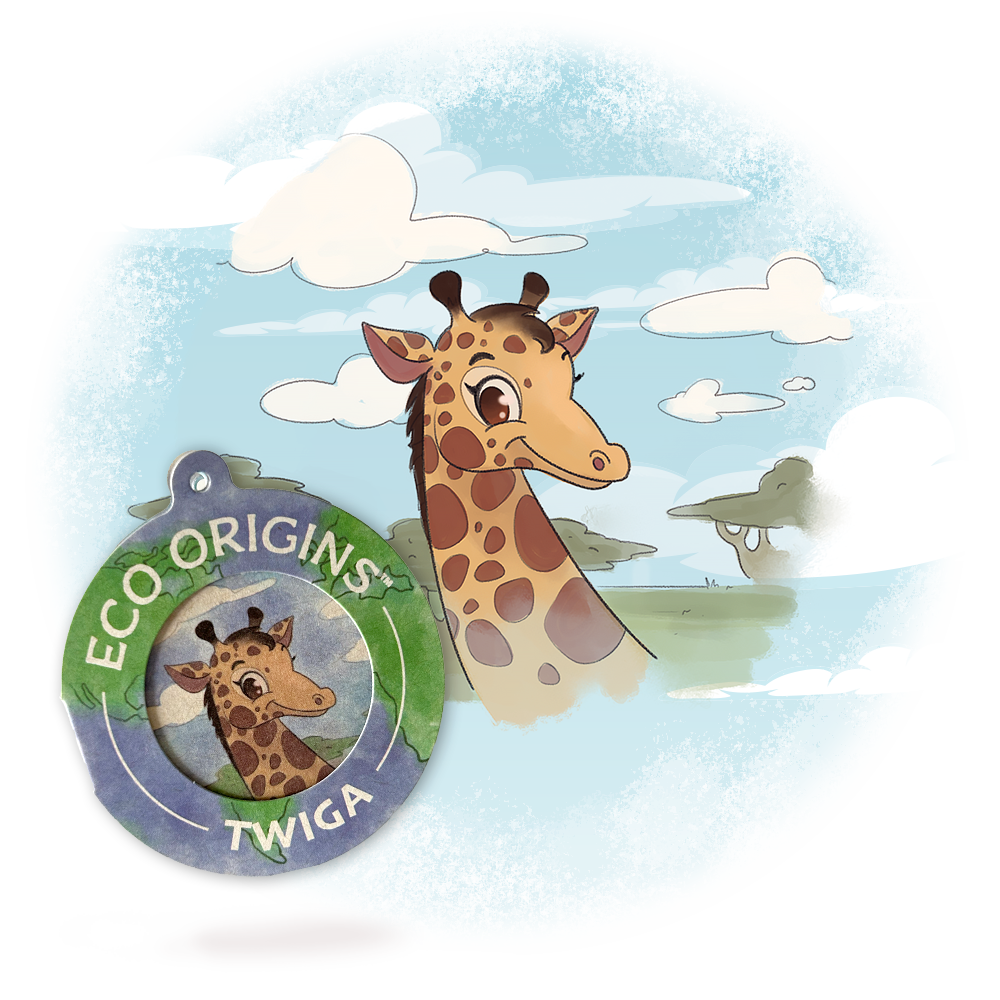
Measuring the Risk of Extinction
A species is considered critically endangered if it has lost 80% or more of its geographic range, and has a greater than 50% chance of extinction over the next 10–100 years.
Critically endangered giraffe subspecies, such as the Nubian giraffe, have suffered devastating population losses due to habitat destruction, poaching, and human-wildlife conflict. With fewer than 600 individuals remaining in the wild, their survival is uncertain without immediate intervention. Factors like agricultural expansion and civil unrest in their native regions exacerbate their decline.
According to the IUCN, 2 subspecies of giraffes are categorised as Critically Endangered. [source]
A species is considered endangered if it has lost more than half of its geographic range, and has a greater than 20% chance of extinction over the next 10–100 years.
Endangered giraffe subspecies, including the Kordofan giraffe, face a high risk of extinction due to habitat fragmentation and illegal hunting. These populations, which are estimated to have declined by over 50% in the last three decades, require urgent conservation efforts to stabilize. Without intervention, their long-term survival remains at significant risk.
According to the IUCN, 2 subspecies of giraffes are considered Endangered. [source]
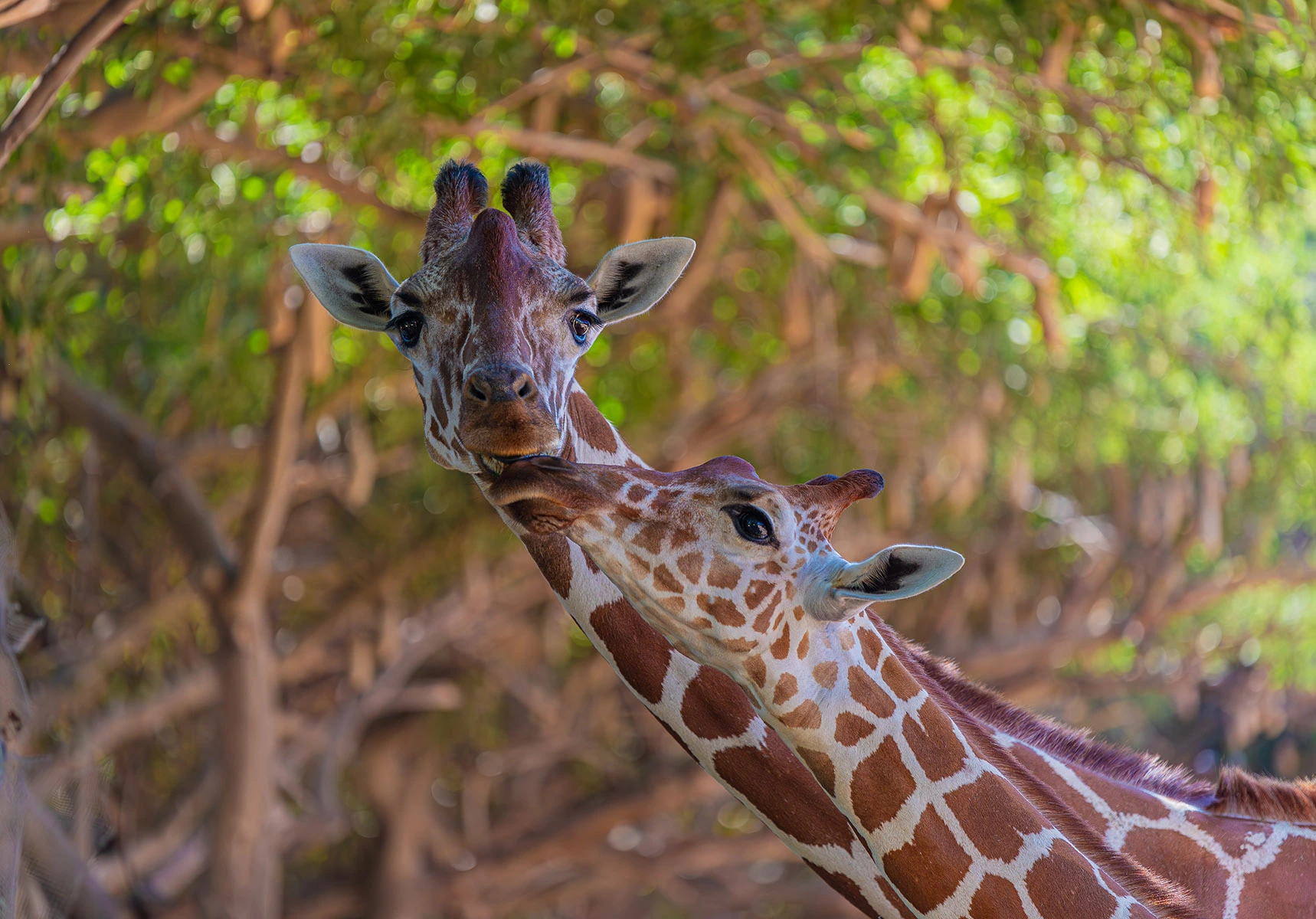
A species is considered vulnerable if there is a greater than 10% chance that it goes extinct in the wild within 100 years.
Vulnerable giraffe subspecies, such as the reticulated giraffe, are experiencing noticeable population declines due to threats like habitat encroachment, disease, and poaching. While their numbers are larger than those of critically endangered or endangered subspecies, they face a more than 10% chance of extinction within the next century if current trends persist.
According to the IUCN, 3 subspecies of giraffes are listed as Vulnerable. [source]
A species is close to meeting the definition of endangered, vulnerable, or critically endangered based on recent trends.
Near-threatened giraffe subspecies, such as the Masai giraffe, have experienced declines due to localized pressures like illegal hunting and habitat degradation. While not yet in immediate danger, these subspecies are approaching a tipping point that could elevate their conservation status without proactive measures.
According to the IUCN, 1 subspecies of giraffes is categorized as Near Threatened. [source]
A species is widespread, abundant, and not threatened with extinction.
Least-concern giraffe subspecies, like the South African giraffe, maintain relatively stable populations in their native habitats, often benefiting from conservation programs and protected areas. Despite this, habitat loss and isolated poaching incidents remain concerns that require ongoing monitoring to prevent future declines.
According to the IUCN, 1 subspecies of giraffes is categorized as Least Concern. [source]
Measuring the Risk of Extinction
A species is considered critically endangered if it has lost 80% or more of its geographic range, and has a greater than 50% chance of extinction over the next 10–100 years.
Critically endangered giraffe subspecies, such as the Nubian giraffe, have suffered devastating population losses due to habitat destruction, poaching, and human-wildlife conflict. With fewer than 600 individuals remaining in the wild, their survival is uncertain without immediate intervention. Factors like agricultural expansion and civil unrest in their native regions exacerbate their decline.
According to the IUCN, 2 subspecies of giraffes are categorized as Critically Endangered. [source]
A species is considered endangered if it has lost more than half of its geographic range, and has a greater than 20% chance of extinction over the next 10–100 years.
Endangered giraffe subspecies, including the Kordofan giraffe, face a high risk of extinction due to habitat fragmentation and illegal hunting. These populations, which are estimated to have declined by over 50% in the last three decades, require urgent conservation efforts to stabilize. Without intervention, their long-term survival remains at significant risk.
According to the IUCN, 2 subspecies of giraffes are considered Endangered. [source]
A species is considered vulnerable if there is a greater than 10% chance that it goes extinct in the wild within 100 years.
Vulnerable giraffe subspecies, such as the reticulated giraffe, are experiencing noticeable population declines due to threats like habitat encroachment, disease, and poaching. While their numbers are larger than those of critically endangered or endangered subspecies, they face a more than 10% chance of extinction within the next century if current trends persist.
According to the IUCN, 3 subspecies of giraffes are listed as Vulnerable. [source]
Near-threatened giraffe subspecies, such as the Masai giraffe, have experienced declines due to localized pressures like illegal hunting and habitat degradation. While not yet in immediate danger, these subspecies are approaching a tipping point that could elevate their conservation status without proactive measures.
According to the IUCN, 1 subspecies of giraffes is categorized as Near Threatened. [source]
Least-concern giraffe subspecies, like the South African giraffe, maintain relatively stable populations in their native habitats, often benefiting from conservation programs and protected areas. Despite this, habitat loss and isolated poaching incidents remain concerns that require ongoing monitoring to prevent future declines.
According to the IUCN, 1 subspecies of giraffes is categorized as Least Concern. [source]
100% Recycled: Head to Toe!
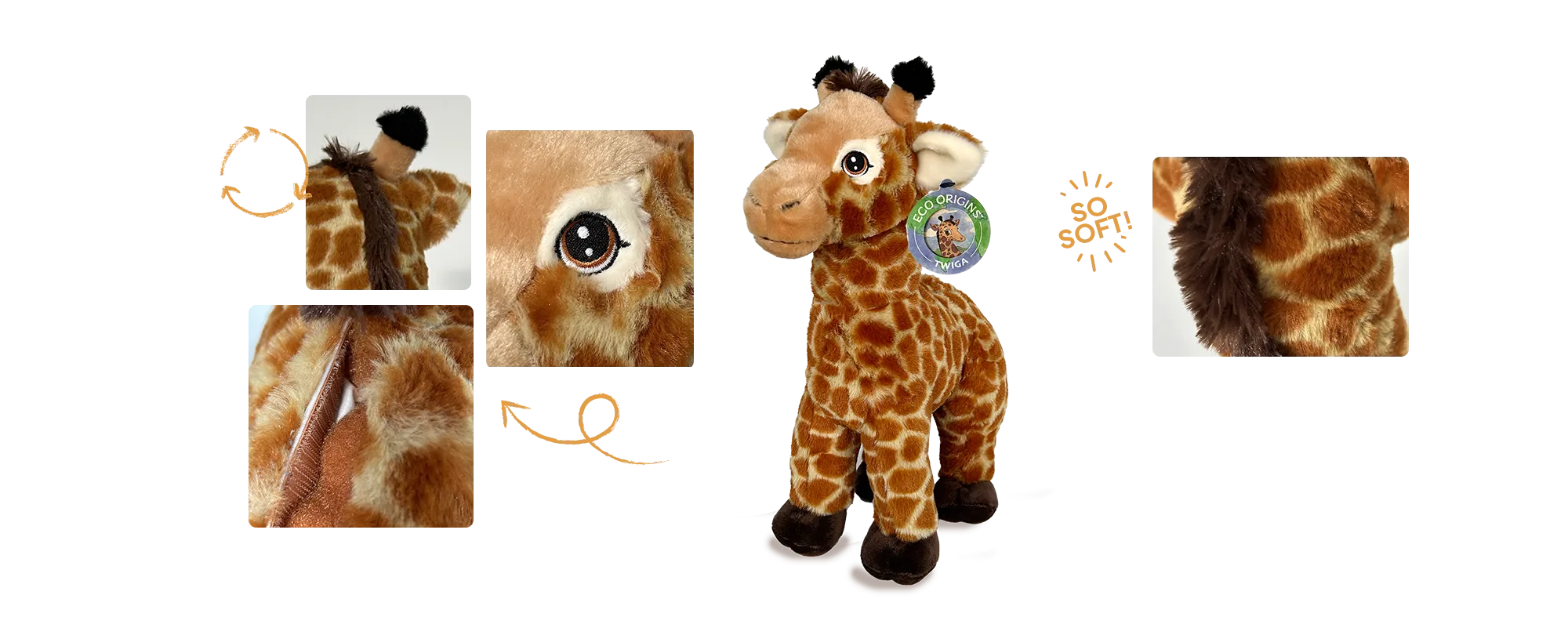
The fabric
We scour the best recycled material fabrics so that our plush always feels premium and soft to the touch!
Hang Tag
The Hangtag is made of recycled paper and attached with a Recycled Polyamide attacher.
Embroidery
Even our threads are recycled! They are extensively used in creation of adorable eyes!
Fiber Fill
What’s inside? Well it’s recycled, super soft, hypo-allergenic fiber!
Call of the Wild: Learning Den
Let’s get inspired to reconnect with nature! Discover cool facts about amazing animals, their families, and why they’re so important for keeping our planet wild and beautiful. It’s time to learn, explore, and take action to protect the incredible creatures that share our world.
20
25
4255
View sure is great from up there!

Fun Facts: Nature Nuggets!
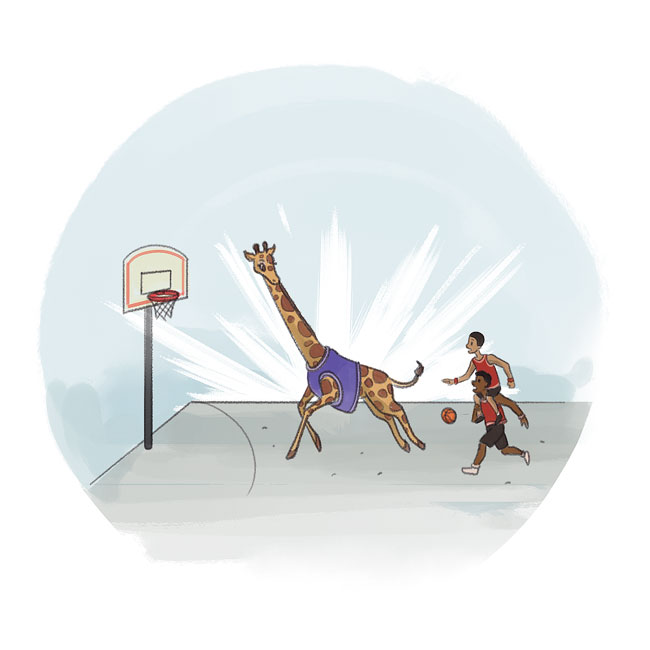
“Head & Shoulders Above the Rest!” Towering up to 18 feet, giraffes are the tallest land animals! Talk about high expectations! It’s like playing against 2 Michael Jordans!
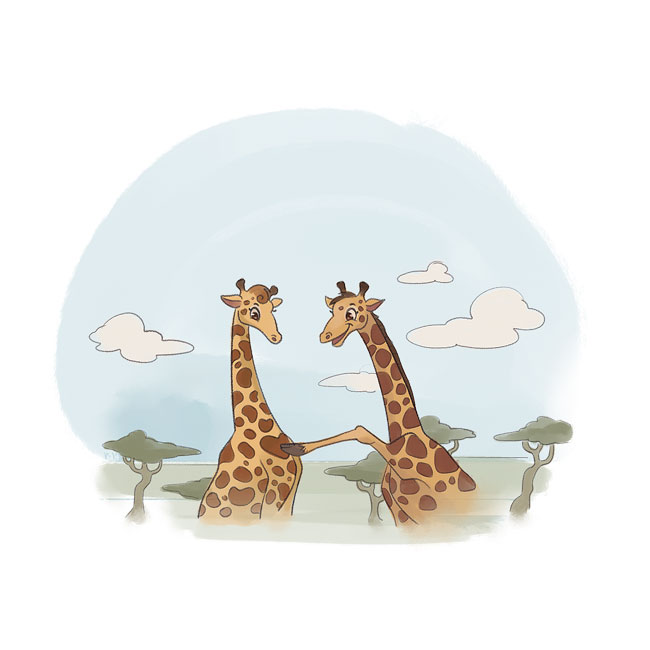
“Spot the Difference!” No two giraffes have the same spot pattern. It’s their version of a spot-on fingerprint!
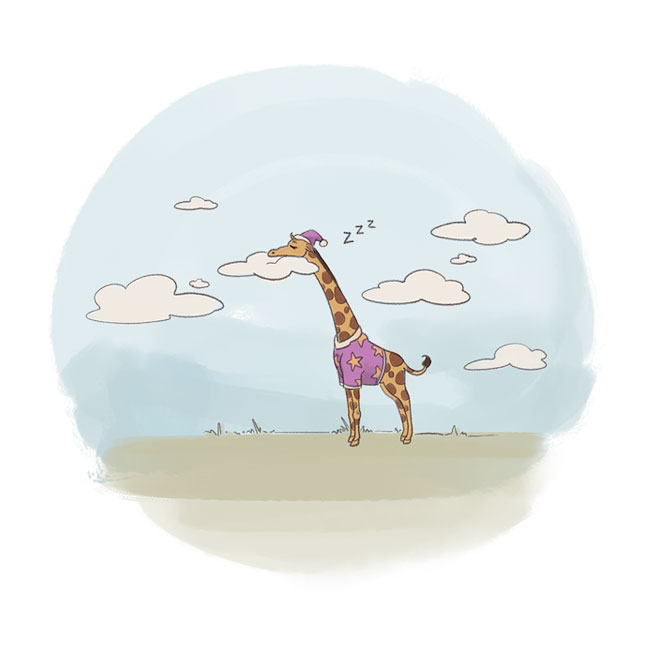
“Standing Sleeping!” Giraffes catch quick “zzz’s” standing up.
They snooze just 30 minutes to 2 hours daily. No time for long naps!

